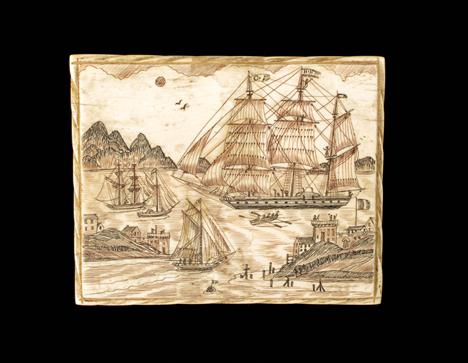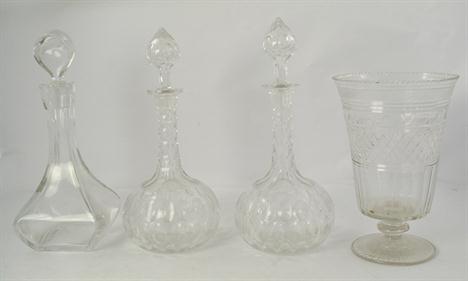68218 Preisdatenbank Los(e) gefunden, die Ihrer Suche entsprechen
68218 Lose gefunden, die zu Ihrer Suche passen. Abonnieren Sie die Preisdatenbank, um sofortigen Zugriff auf alle Dienstleistungen der Preisdatenbank zu haben.
Preisdatenbank abonnieren- Liste
- Galerie
-
68218 Los(e)/Seite
William John Hennessy (1839-1917) The Shrimpers (1886) Oil on canvas, 61 x 123cm (24 x 48½") Signed and dated 1886 lower left William John Hennessy's early life was marked by the dramatic events of mid-nineteenth-century Ireland. Born in 1839 at Thomastown, Co. Kilkenny, Hennessy and his mother and a brother, followed his father into exile when he was only ten years old. His father, John Hennessy, a participant of the Young Ireland uprising, had fled the country a year earlier, in 1848, arriving in Canada and then settling in New York. Hennessy's formative years were thus spent in New York and he was educated at the National Academy of Design, where he enrolled at the age of fifteen. In 1861 he was elected as an associate at the same institution and became an academician two years later, in 1863. Amidst his flourishing recognition and firm establishment as one of the leading Pre-Raphaelites working in America, Hennessy returned to the British Isles. Already renowned as an extraordinarily successful painter, illustrator and honorary member of American Society of Painters in Watercolour, he moved to London where he became a member of the Royal Institute of Oil Painters, showing his works at the Royal Academy (1871-82), at the Grosvenor Gallery and the New Gallery. His genre scenes in particular became immensely popular, demonstrating his development of Victorian aesthetics, the play of the painting's intrigue, its narrative and the title, to a sophisticated perfection. His luminous, exquisitely colourful landscapes were also strongly admired amongst his contemporaries and Hennessy was considered a virtuoso in depiction of skies. Like his Irish contemporaries Walter Frederick Osborne and Sir John Lavery. Hennessy travelled frequently on the Continent. France became one of his favourite destinations and in particular, the landscapes of Normandy where he spent summers at the picturesque port of Honfleur and around the Calvados region, painting some of his most important, iconic genre scenes such as "Fete Day in a Cider Orchard" (Coll. Ulster Museum Belfast). His fresh rustic subject matter and handling of works painted in the area bear similarities to the Barbizon school and are also comparable to the works of Frank O'Meara and Egerton Coghill. In 1886, Hennessy moved to Saint-Germain-en-Laye, where he lived until 1893 and some sources record him studying in Paris before 1900 and exhibiting at the Paris Exposition in 1903 including works such as "Waiting for the Boats - Coast of Calvados"; "Feeding Pigeons - Mareil, Marly" (1901) and "A sketch of Bordighera, Italy". In 1893 Hennessy returned to Britain, settling in Sussex. Towards the end of his life he paid tribute to his Irish roots and identity by showing mostly at exhibitions dedicated to Irish art - an exhibition of Irish painters organised by Hugh lane at London's Guildhall in 1904, at the Royal Hibernian Academy, Dublin in 1906 and at Irish International Exhibition in Dublin in 1907.
PORT OF TRURO. "Plan of the intended improvement in the Navigation in the Port of Truro..." surveyed by Mr Robert Vazie, hand col printed, 21 x 28ins, pub J. Shuttleworth & Co.; also includes "Prospectus on an Improvement in the Port of Truro with pen and ink and col drawing of machinery dated Truro, 8th Feb 1823 Rob Vazie. (See illustration)
A late 17th century Jamaican engraved tortoiseshell wig comb and case, inscribed `JAMAICA 1678`, possibly by Paul Bennett, the front of the case with a vase of flowers, the stem with a coronet, with a later applied printed extract mentioning early English combs, above the inscription, with a trailing foliage border, the reverse with a banana tree and two pineapples, with conforming border, the comb with trailing tulip, sunflower and other flowers, the case 7¾in (19.7cm) high, 5in (14cm) wide. (2) This comb and case are a remarkable survivor of a small group of similar examples made in Jamaica between 1671 - 1682 and 1688 - 1692. Research has revealed two possible makers for these pieces. The first and most likely to have made the example above was Paul Bennett, who is listed as the only combmaker working in Port Royal within these dates, the second is likely to be an assitant, son or apprentice. There are eleven of these combs in The Institute of Jamaica, all bearing similar treatment of the decoration. Some include a smaller double sided comb. Examples of dated Jamaican tortoiseshell include; a pair of combs with case, dated 1673, Bonhams, Fine English Furniture, 21st Nov 2012, sold £23,750 (inc. prem.); an oval box, dated 1678, Lacy Scott & Knight, 15th September, sold £3,000 (hammer); See Victoria & Albert Museum, combs and case, dated 1673 (524 to B-1877).
Seguy (Eugene Alain) - Papillions, this being a port folio, comprising an introductory leaflet with table of contents, together with twenty coloured phototype of many varieties of butterflies subjects to include Indian, Amazon, Mexican etc, each plate with Seguy`s initials and name with small black and white image of three butterflies in the bottom left hand corner, published by Tolmer, 13 Quay D`anjou, Paris, circa 1925, contained in a cardboard booklet, the front title page with decorative images of butterflies. Eugene Alain Suguy was one of the foremost French designers of the beginning of the 20th century. Working in both the Art Deco and Art Nouveau styles, he published many design folios utilising the Pochoir tecnique, a printing process employs a series of stencils to lay dense and vivid colour (af) (illustrated).
-
68218 Los(e)/Seite



























































